Abstract
A polyneuropathy of varying severity has been observed in association with sepsis and critical illness in 15 patients. Since clinical evaluation is often difficult, electrophysiological studies provided definitive evidence for polyneuropathy. These revealed reductions in the amplitudes of compound muscle and sensory nerve action potentials, the most marked abnormality. Near-nerve recordings confirmed such reductions for sensory fibres. Needle electromyography revealed signs of denervation of limb muscles. Phrenic nerve conduction and needle electromyographic studies of chest wall muscles suggested that the polyneuropathy partially explained difficulties in weaning patients from the ventilator, an early clinical sign. No defect in neuromuscular transmission was demonstrated, despite the use of aminoglycoside antibiotics in some patients. In those who survived the critical illness, clinical and electrophysiological improvement occurred. The 15 critically ill polyneuropathy patients were compared with 16 Guillain-Barré syndrome patients observed during the same period. The analysis showed that the two polyneuropathies are likely to be separate entities that can be distinguished in most instances by the predisposing illness, electrophysiological features and cerebrospinal fluid results.
Full text
PDF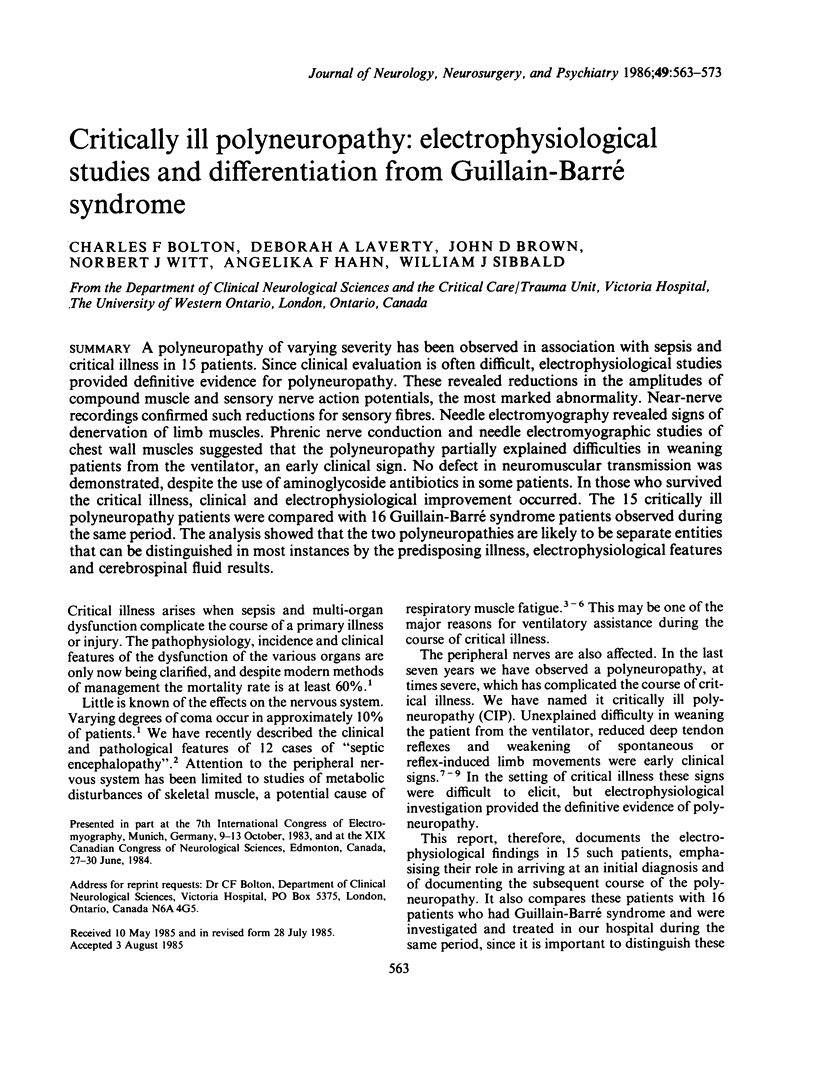
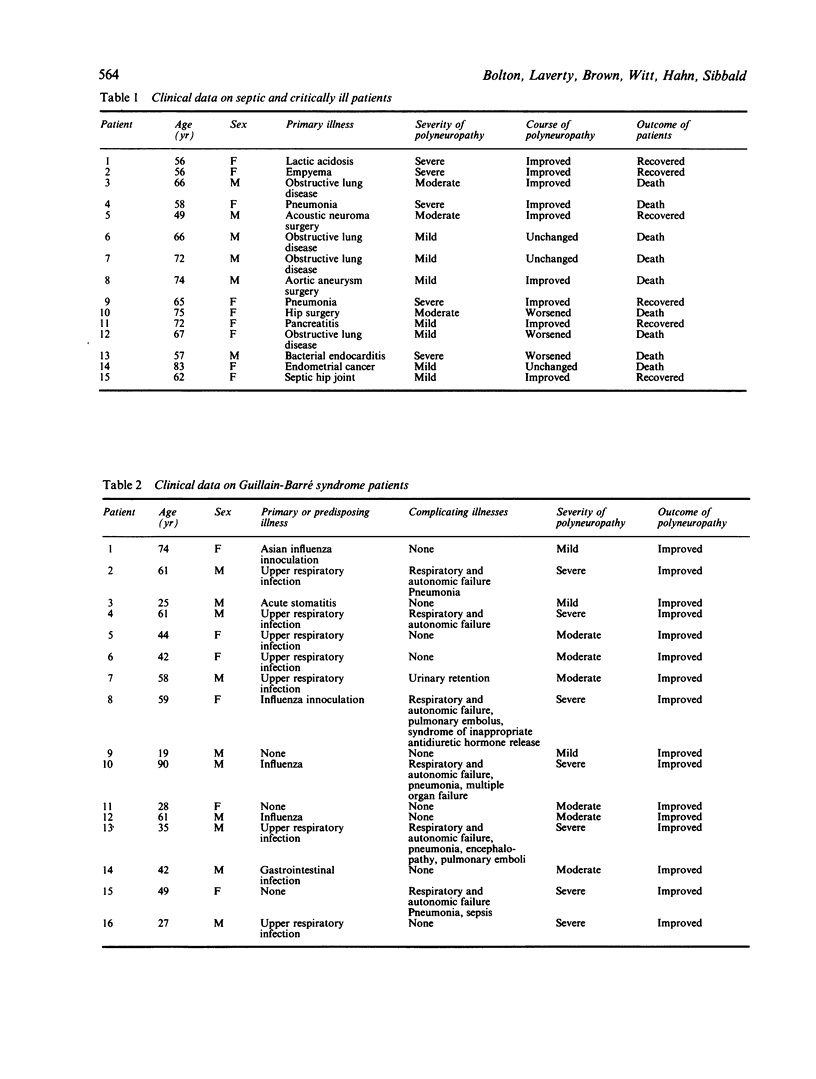
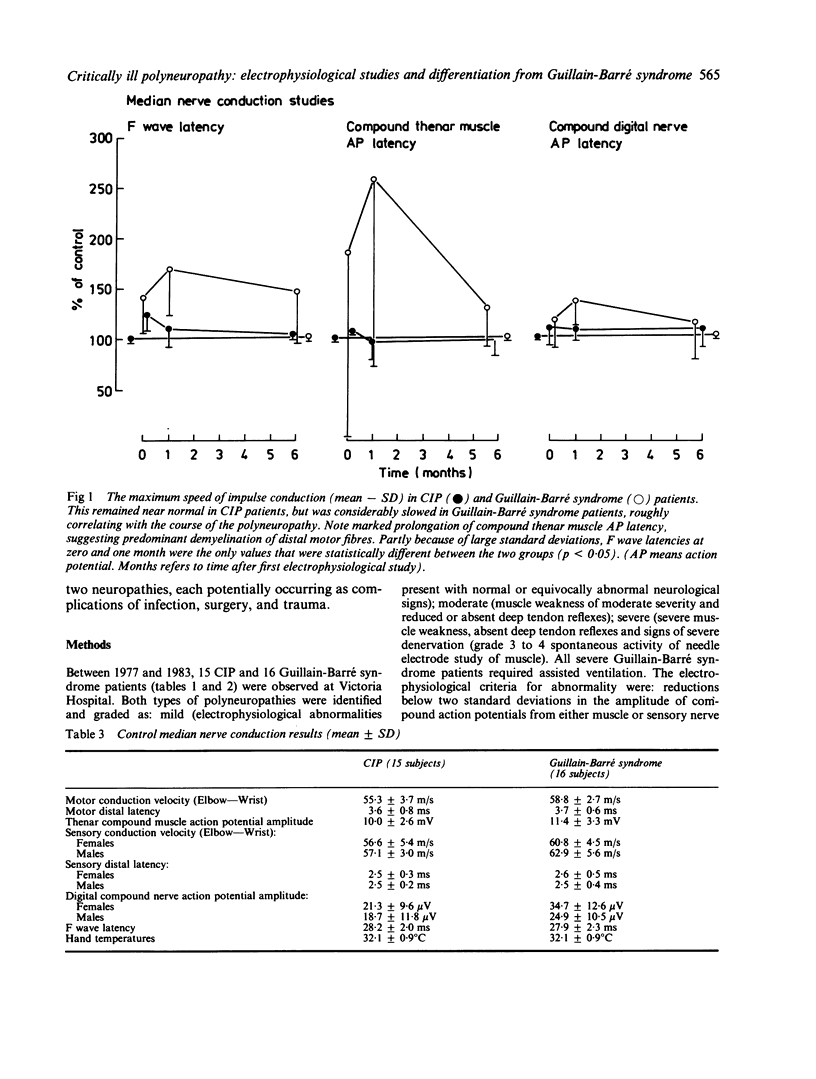

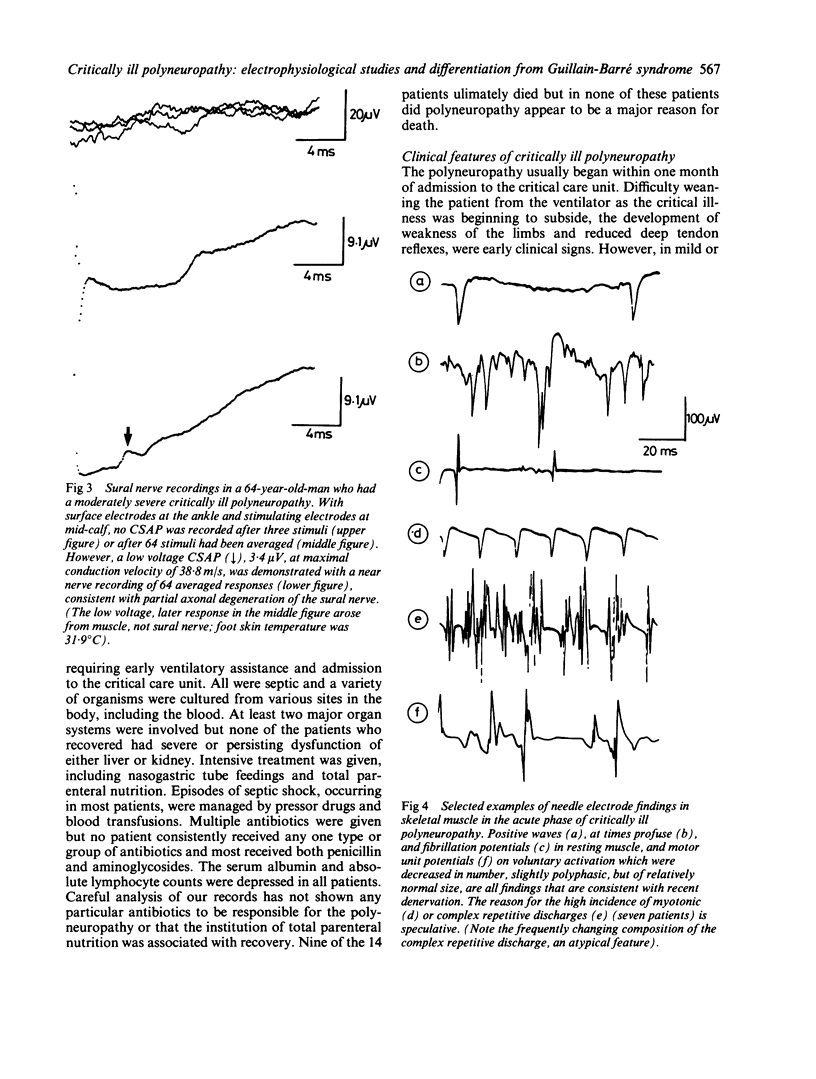
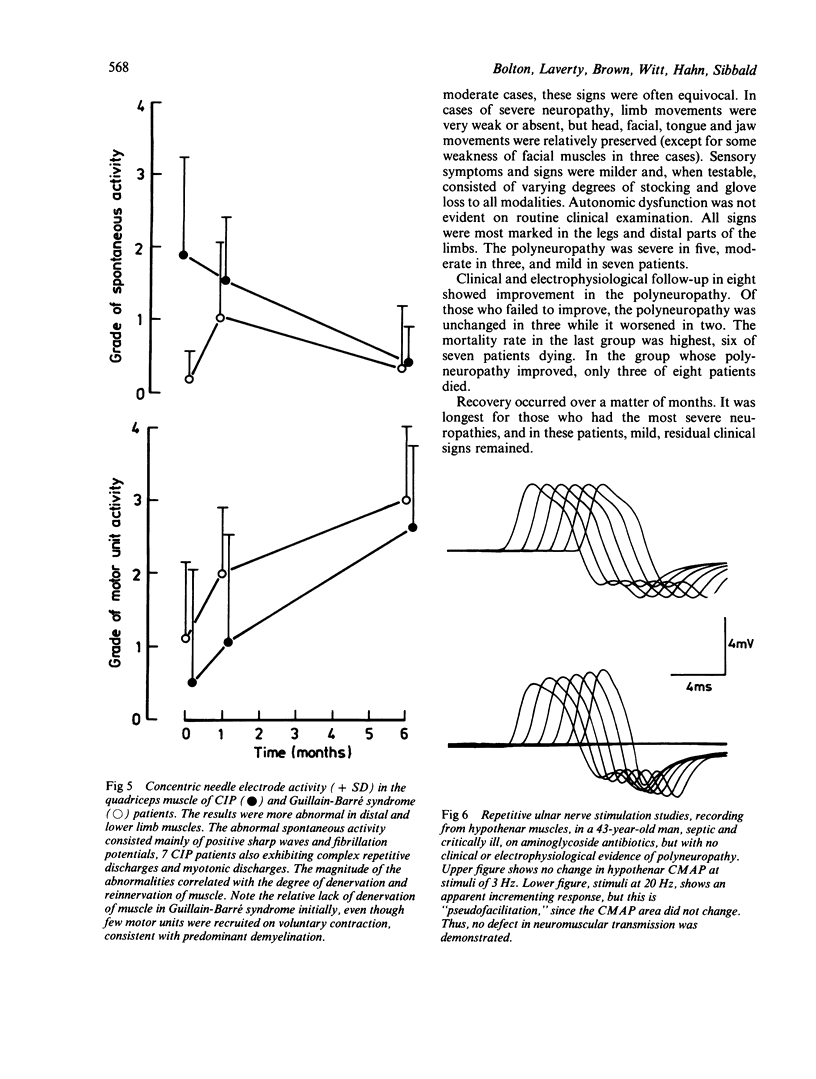
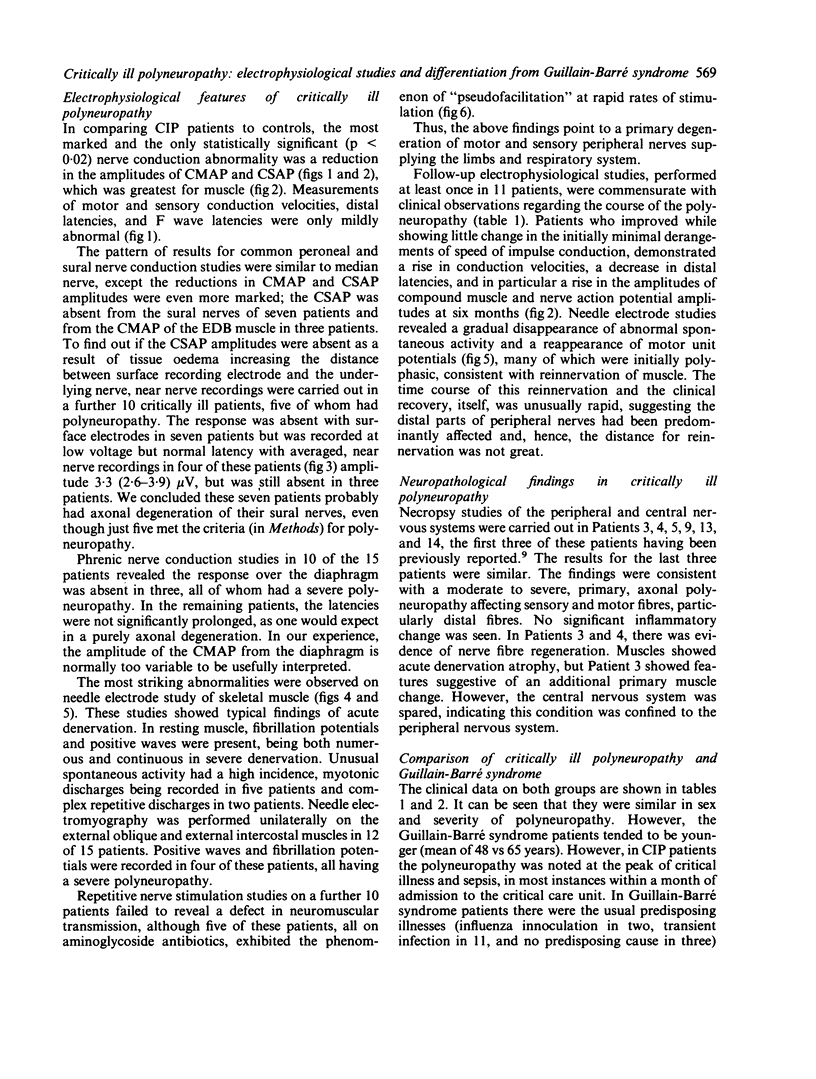
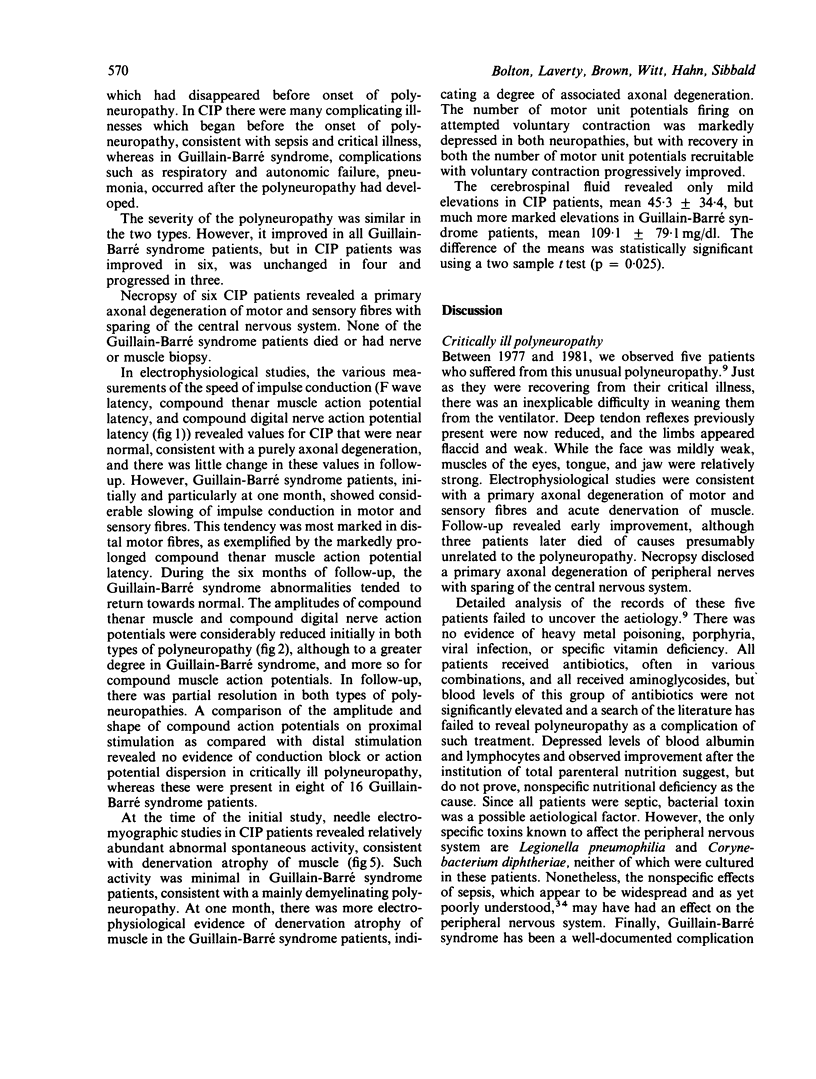
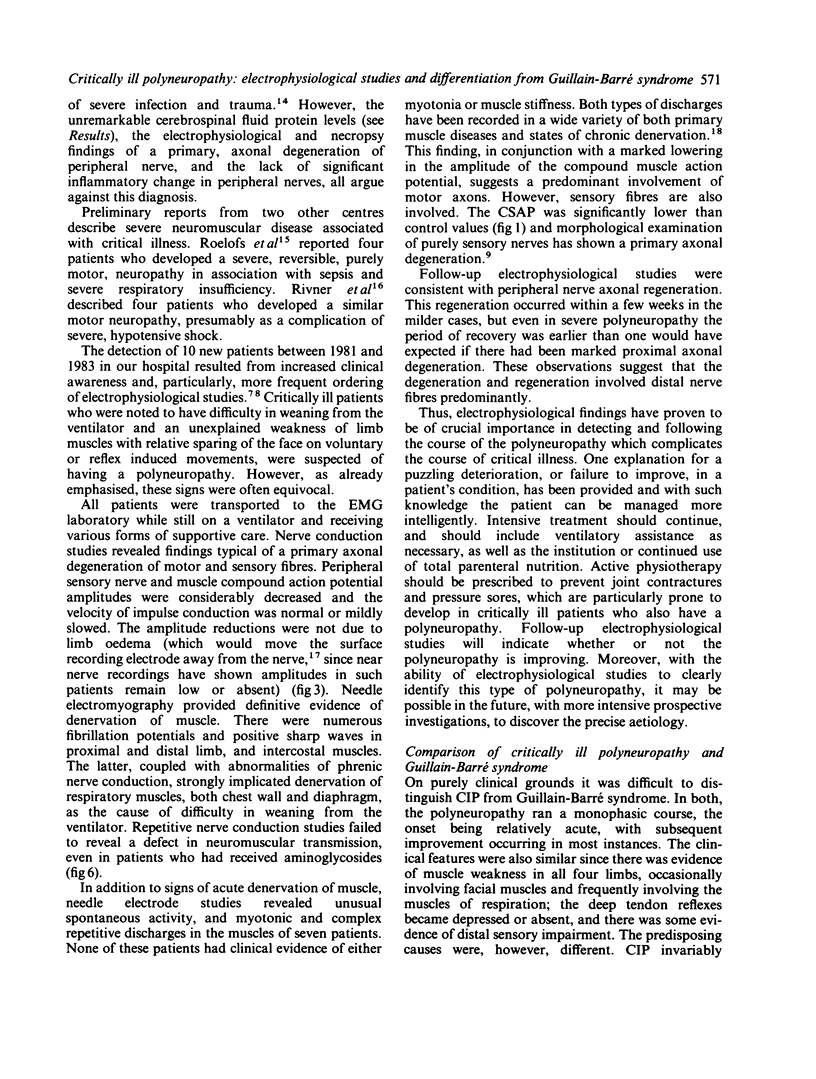
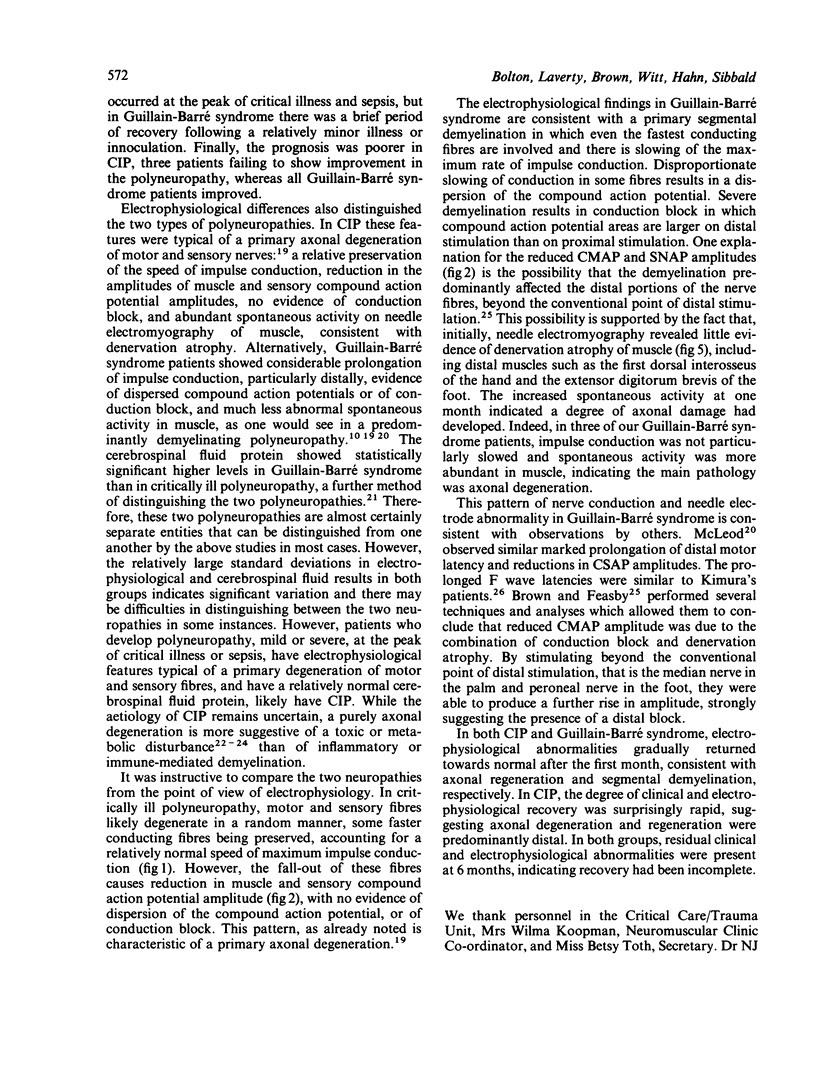
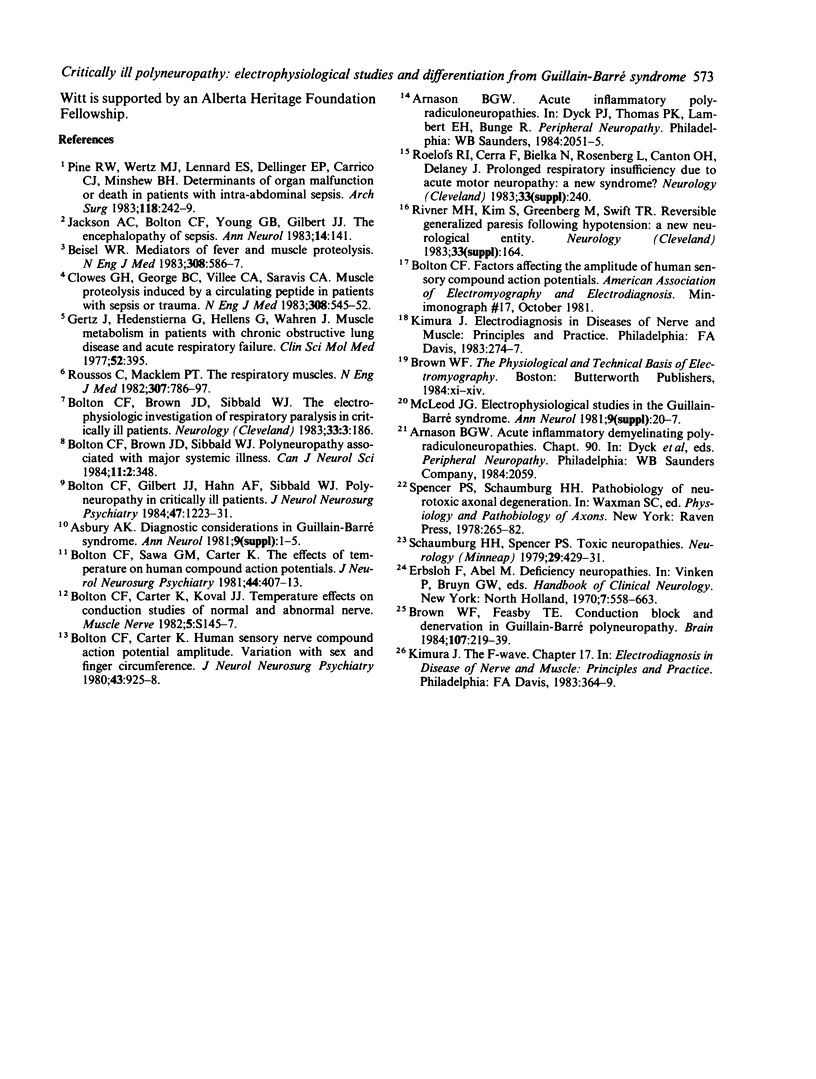
Selected References
These references are in PubMed. This may not be the complete list of references from this article.
- Beisel W. R. Mediators of fever and muscle proteolysis. N Engl J Med. 1983 Mar 10;308(10):586–587. doi: 10.1056/NEJM198303103081009. [DOI] [PubMed] [Google Scholar]
- Bolton C. F., Carter K. M. Human sensory nerve compound action potential amplitude: variation with sex and finger circumference. J Neurol Neurosurg Psychiatry. 1980 Oct;43(10):925–928. doi: 10.1136/jnnp.43.10.925. [DOI] [PMC free article] [PubMed] [Google Scholar]
- Bolton C. F., Carter K., Koval J. J. Temperature effects on conduction studies of normal and abnormal nerve. Muscle Nerve. 1982;5(9S):S145–S147. [PubMed] [Google Scholar]
- Bolton C. F., Gilbert J. J., Hahn A. F., Sibbald W. J. Polyneuropathy in critically ill patients. J Neurol Neurosurg Psychiatry. 1984 Nov;47(11):1223–1231. doi: 10.1136/jnnp.47.11.1223. [DOI] [PMC free article] [PubMed] [Google Scholar]
- Brown W. F., Feasby T. E. Conduction block and denervation in Guillain-Barré polyneuropathy. Brain. 1984 Mar;107(Pt 1):219–239. doi: 10.1093/brain/107.1.219. [DOI] [PubMed] [Google Scholar]
- Clowes G. H., Jr, George B. C., Villee C. A., Jr, Saravis C. A. Muscle proteolysis induced by a circulating peptide in patients with sepsis or trauma. N Engl J Med. 1983 Mar 10;308(10):545–552. doi: 10.1056/NEJM198303103081001. [DOI] [PubMed] [Google Scholar]
- McLeod J. G. Electrophysiological studies in the Guillain-Barré syndrome. Ann Neurol. 1981;9 (Suppl):20–27. doi: 10.1002/ana.410090705. [DOI] [PubMed] [Google Scholar]
- Pine R. W., Wertz M. J., Lennard E. S., Dellinger E. P., Carrico C. J., Minshew B. H. Determinants of organ malfunction or death in patients with intra-abdominal sepsis. A discriminant analysis. Arch Surg. 1983 Feb;118(2):242–249. doi: 10.1001/archsurg.1983.01390020084014. [DOI] [PubMed] [Google Scholar]
- Roussos C., Macklem P. T. The respiratory muscles. N Engl J Med. 1982 Sep 23;307(13):786–797. doi: 10.1056/NEJM198209233071304. [DOI] [PubMed] [Google Scholar]
- Schaumburg H. H., Spencer P. S. Toxic neuropathies. Neurology. 1979 Apr;29(4):429–431. doi: 10.1212/wnl.29.4.429. [DOI] [PubMed] [Google Scholar]


